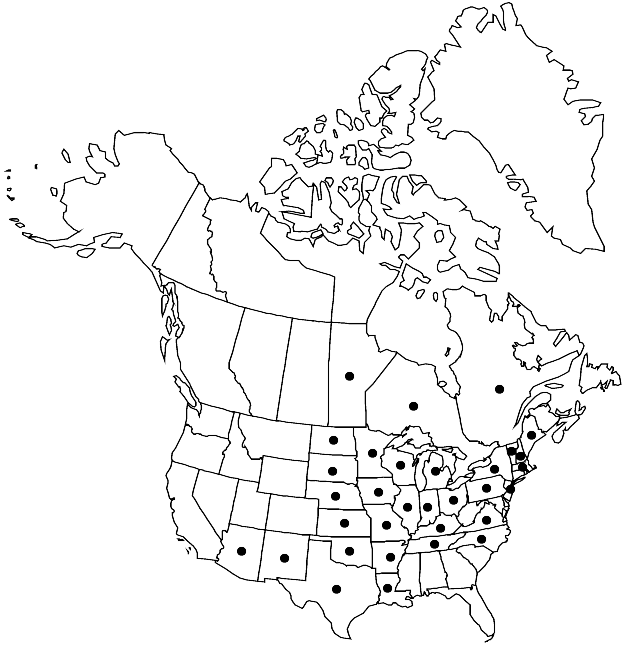Lindbergia brachyptera
Eur. N. Amer. Bryin., 13. 1897.
Plants dark green, yellowish, or brownish, dull. Stems ± straight, not subjulaceous when dry. Leaves widespreading to squarrose when dry or moist, ovate to ovatelanceolate, gradually to abruptly narrowed to apex, 0.9–1.4 mm; margins entire or faintly serrate distally; apex pale or yellowish; costa 1/2–2/3 leaf length, slender; basal laminal cells oblate; medial cells oval, rounded, or rhombic, 8–10 µm, bluntly 1-papillose; apical cells oblong, smooth. Specialized asexual reproduction by brood branches often present in leaf-axils, in ± straight, dense clusters. Seta 0.6–0.8 cm. Capsule 1.5 mm. Spores 18–23 µm, very minutely roughened.
Phenology: Capsules mature Mar–Dec.
Habitat: Tree trunks, roadside maples and elms, deciduous trees, cedar, pine, logs, rock
Elevation: low to high elevations (30-2800 m)
Distribution

Man., Ont., Que., Ariz., Ark., Ill., Ind., Iowa, Kans., Ky., La., Maine, Mass., Mich., Minn., Mo., Nebr., N.H., N.J., N.Mex., N.Y., N.C., N.Dak., Ohio, Okla., Pa., S.Dak., Tenn., Tex., Vt., Va., Wis., Mexico (Zacatecas), Asia
Discussion
In New Mexico and western Texas, the ranges of Lindbergia brachyptera and L. mexicana overlap. However, L. brachyptera is distinguished by nonjulaceous branches, leaves widely spreading when moist, abruptly narrowed acumina often pale green or yellowish, slender costa 1/2–2/3 times the leaf length, and strongly 1-papillose laminal cells.
In the northwestern part of the range of Lindbergia brachyptera, plants form rather large dense mats on the bark of trees. This is not true in the eastern part of its range where plants seldom form mats, and colonies often consist of single to very few scattered strands growing in crevices of bark or among other mosses. Consequently, this species is easily overlooked and probably under-collected in the eastern part of its range. This may explain the absence of collections from West Virginia and only scattered collections from Kentucky and Tennessee. Lindbergia brachyptera is very common in Iowa, eastern Kansas, Minnesota, Missouri, and Wisconsin. H. A. Crum (1956) provided an excellent discussion of the ecology and geography of L. brachyptera.
Selected References
None.
Lower Taxa
"slender" is not a number."broad" is not a number.